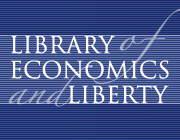
William F. Sharpe |

One implication of Sharpe's work is that the expected return on a portfolio in excess of a riskless return should be beta times the excess return of the market. Thus, a portfolio with a beta of 2 should have an excess return that is twice as high as the market as a whole. If the market's expected return is 8 percent and the riskless return is 5 percent, the market's expected excess return is 3 percent (8 minus 5) and the portfolio's expected excess return is therefore 6 percent (twice the market's expected excess return of 3 percent). The portfolio's expected total return would then be 11 percent (6 plus the riskless return of 5).
Sharpe was a Ph.D. candidate at the University of California at Los Angeles and an employee of the Rand Corporation when he first met Markowitz, who was also employed at Rand. Sharpe chose Markowitz as his dissertation adviser, even though Markowitz was not on the faculty at UCLA. Sharpe taught first at the University of Washington in Seattle and then at the University of California at Irvine. In 1971 he became a professor of finance at Stanford University. In 1986 Sharpe founded William F. Sharpe Associates, a firm that consulted to foundations, endowments, and pension plans. He returned to Stanford as a professor of finance in 1993.
"Capital Asset Prices: A Theory of Market Equilibrium under Conditions of Risk." Journal of Finance 19 (September 1964): 425-42.
"The Capital Asset Pricing Model: A 'Multi-Beta' Interpretation." In Financial Decision Making under Uncertainty, edited by H. Levy and M. Sarnat. 1977.
